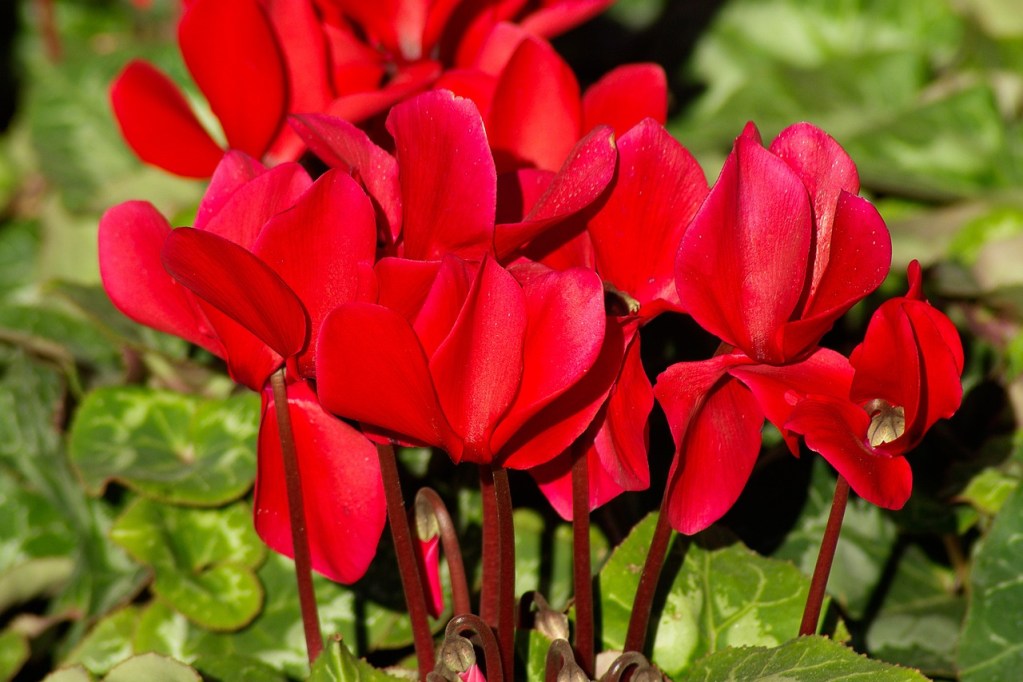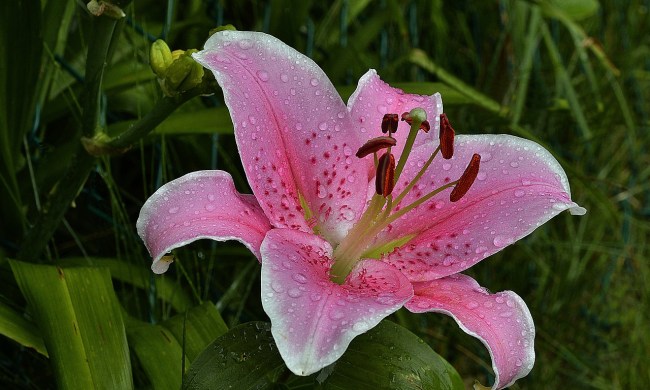Cyclamen are small perennial plants with beautiful flowers in a variety of shades of white, red, pink, and purple. Their small size and bright colors make them a great choice for holiday gifts, displays, and centerpieces. Not only are they hardy in a wide range of zones, they also bloom during fall and winter. This makes them a brilliant choice if you want a plant to add color and cheer to your garden during the seasons when it may not be too lively. To get started growing this beautiful perennial, here’s our guide on how to care for cyclamen flower.
When and how to plant cyclamen

Cyclamens are perennials that can grow from seed or seedlings or by dividing the tubers of mature plants. Cyclamens are native to the Mediterranean, where they can grow in rocky areas when the weather begins to cool. They do most of their growing and blooming in cooler weather, and go dormant during the hotter months of summer.
Mature plants can be found in most nurseries or garden stores during fall and winter, while seeds are available year-round. To start, plant your cyclamen in rich, well-draining soil. Soil that is loamy, or rich in organic material, and slightly acidic is ideal. You can add compost to regular potting soil for indoor cyclamens. Mature plants can be transplanted into your preferred container or outdoor garden as soon as you get them, but seeds are best planted in late summer.
Cyclamen can be grown indoors or outdoors, but are more often grown as houseplants. This is due in part to their sensitivity to heat. If you want to grow cyclamen outdoors, you should ideally live in a region with temperatures below 65 degrees Fahrenheit in fall, winter, and spring.
Basic care for cyclamen

Since cyclamen grow during fall, winter, and spring, the majority of their care also takes place during these seasons. During the growing seasons, cyclamen need bright, indirect light. For indoor plants, this is easy to accomplish by placing them near a sunny window. Outdoor cyclamen should be planted in partial shade. Afternoon shade, in particular, is helpful, since cyclamen are sensitive to heat.
They need fairly consistent moisture, but can still develop root rot if overwatered. Test the soil to about an inch down. If it’s dry, your cyclamen needs to be watered. Always water below the leaf line and avoid splashing water onto the leaves. Damp leaves can rot over time, which can lead to a sickly and vulnerable plant.
Once your cyclamen is mature, it can be fertilized, but only sparingly. Once every month or every other month is enough during the growing seasons. Over-fertilization can lead to an overproduction of leaves and fewer flowers. Avoid fertilizing entirely during summer.
It’s important to note that cyclamen are toxic to both pets and people. If you have animals or small children that enjoy chewing on your houseplants, you shouldn’t add cyclamen to your home. If you do, keep them well out of reach of your pets or kids.
When should you expect your cyclamen to bloom?

Mature cyclamen begin blooming, in most cases, beginning in late November or early December. These flowers can last over 8 weeks, and typically begin fading in mid to late spring. In general, cyclamen are reliable plants. However, timing can become an issue if you’re growing your cyclamen from seed.
It can take a full year for them to mature enough to begin flowering, so, if you’re impatient, it’s easier and faster to get a mature plant from your local nursery. Once the flowers begin to fade, you’ll likely see seed pods. You can clip these seed pods off, or, if your cyclamen is outdoors, leave them and you might get new cyclamen plants.
Caring for your cyclamen during dormancy

Toward the end of spring and beginning of summer, your cyclamen’s leaves will begin to turn yellow and fall away. Although this can be startling the first time it happens, your cyclamen is perfectly fine, it’s just going into dormancy. While it’s dormant, it won’t grow, so it doesn’t need water or light like it does during the rest of the year. Stop watering your cyclamen and move it to a cool, dark part of your house. It’ll stay dormant for roughly two to three months before beginning to grow again.
At the end of summer, move your cyclamen back to its sunny spot and give it a thorough watering to help wake it up. You should start to see leaves returning within a few weeks. If your cyclamen is planted outdoors, you don’t need to do anything special. Simply stop watering your cyclamen when it goes dormant and resume at the beginning of fall. The natural cycle of dormancy will take care of the rest.
What zones are cyclamen hardy in?

Cyclamen can grow in USDA hardiness zone 4 to zone 11, but there is a catch. There are several species of plants in the cyclamen genus, and not all of them are native to the same zones. So while there is likely a type of cyclamen that can grow in your zone, the trick is to find the right one. For example, Cyclamen persicum (Persian cyclamen) prefers the warmer weather of zones 9 to 11, and cannot tolerate the colder winters north of zone 9. Cyclamen hederifolium (ivy-leaved cyclamen or hardy cyclamen), on the other hand, has a wider range it can grow in, from zone 5 to zone 9. If you’re growing your cyclamen as an indoor plant, you won’t need to worry too much about these zones, though. Since you have control over the temperature and weather conditions in your home, you can simulate practically any climate for your cyclamen.
Now you’re ready to bring these delightful little plants into your home. They can add a pop of color to any home during a season that typically isn’t associated with flowers, and they make wonderful holiday gifts and decor. Just be sure to keep them out of reach of your children and pets, and remember to leave your cyclamen undisturbed during summer.




